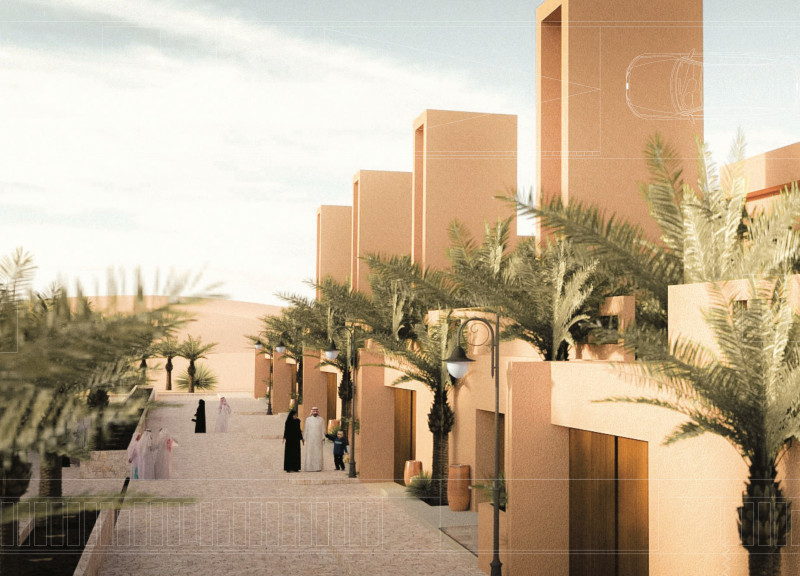5 key facts about this project
At its core, the project is designed to serve multiple functions. It is intended to be a versatile space that can accommodate a variety of activities, whether for social gatherings, educational purposes, or community events. The design seamlessly integrates these functions into a cohesive whole, ensuring that each area not only serves its purpose but also contributes to the overall flow and atmosphere of the space. The layout promotes connectivity, encouraging interaction among users while also providing areas of quiet reflection.
Central to the architectural design is the concept of spatial harmony. The arrangement of various spaces is executed in a manner that balances openness with intimacy. Vast communal areas are complemented by smaller, more private niches, allowing users to choose their level of engagement based on their needs. The movement through the building is intuitive, guiding occupants from one area to another in a way that feels natural and welcoming. This organization is enhanced by the careful placement of windows and openings, which invite natural light and connect the interior spaces to the outdoors.
Materiality plays a crucial role in the project's overall expression. A selection of durable yet aesthetically pleasing materials has been employed, creating a visual language that respects both the environment and the occupants. For instance, the use of locally sourced stone not only reduces the carbon footprint associated with transportation but also connects the building to its surroundings. Complemented by timber and glass elements, the materials work in harmony to create a warm and inviting atmosphere. Each material is selected not just for its appearance but for its contribution to the building's performance; for example, high-performance glazing minimizes energy loss while maximizing daylight.
Unique design approaches are evident throughout the project. The architects have infused innovative strategies into the building's form and function. Green design elements are woven throughout, emphasizing sustainability without compromising aesthetic appeal. The incorporation of green roofs not only provides insulation but also contributes to local biodiversity. Rainwater harvesting systems are strategically placed to enhance water efficiency, demonstrating the project's commitment to environmental stewardship.
The façade of the building stands out for its contemporary interpretation of traditional forms. The combination of textures, colors, and patterns provides visual interest while maintaining a sense of cohesion with the context. This attention to detail is reflected in the carefully designed entry points, which invite occupants into the space while providing a sense of shelter and comfort. The transition from the exterior to the interior is designed to be seamless, with features that promote accessibility and inclusivity.
In addition to the exterior, the interiors have been crafted to support the diverse activities that will unfold within. Flexible spaces can be easily reconfigured for different uses, and movable partitions allow for adaptability based on changing needs. The choice of furnishings and finishes also echoes the project's guiding principles, ensuring that the environment remains comfortable and functional for all users.
This project ultimately represents a meaningful contribution to the landscape of architecture in its region. By prioritizing functionality, sustainability, and contextual sensitivity, it sets an example for future developments. The integration of innovative design strategies and material choices reflects a thoughtful approach to contemporary architecture, emphasizing the delicate balance between form and function.
For those interested in delving deeper into this architectural endeavor, exploring the architectural plans, sections, and design elements will provide further insights into the creative process behind this project. Each detail has been meticulously considered to ensure that the final outcome is a harmonious blend of innovation and practicality in architecture. Discover more about this project to appreciate its full complexity and significance within the realm of modern design.


























